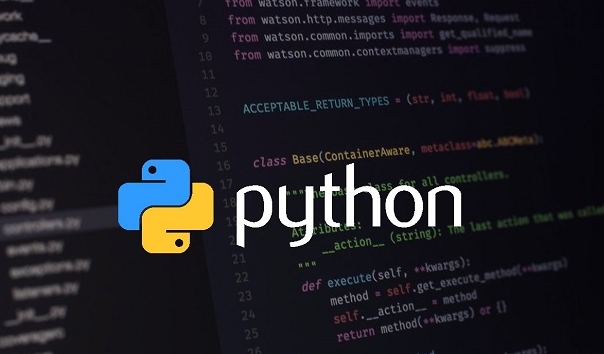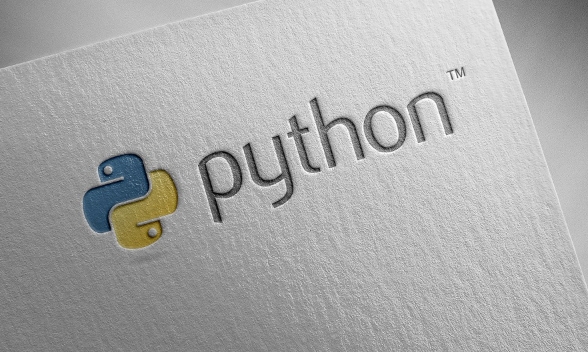A metaclass is a "class that creates a class", and by default, it uses type to create a class; when you define class, Python actually calls type('ClassName', (), {}) to generate a class object. Custom metaclasses can be processed before and after class creation by inheriting type and overwriting new or init methods, such as forcing the implementation of methods, automatically registering subclasses, interface verification, modifying attributes/methods, implementing design patterns, etc. For example, check whether the class implements required_method. Metaclasses are suitable for framework development, but attention should be paid to avoiding abuse, complex debugging, over-encapsulation and other problems.

metaclass in Python is a class that creates a class. We usually use class to define a class, and this class itself is actually an object, which is created by a certain metaclass. By default, Python uses the built-in type as a metaclass to create all classes.

What exactly is metaclass doing?
When you write the following code:

class MyClass:
passPython actually does this behind it:
MyClass = type('MyClass', (), {}) In other words, type is the mechanism used by Python to generate classes by default. You can understand it as a "class constructor".

Why do you need to customize metaclasses?
Sometimes you want to do some unified processing before or after the class is created, such as automatically adding properties and methods, or verifying whether the class structure complies with certain specifications.
To give a simple example: you want to make sure that all subclasses that use a certain base class must implement a specific method, such as required_method . At this time, you can use metaclasses to check.
class MyMeta(type):
def __new__(cls, name, bases, attrs):
if 'required_method' not in attrs:
raise TypeError("required_method method must be implemented")
return super().__new__(cls, name, bases, attrs)
class MyClass(metaclass=MyMeta):
def required_method(self):
pass If you try to define a class without required_method , the program will report an error when it is defined.
Commonly used scenarios of metaclasses
- Automatically register subclasses : For example, all subclasses are automatically discovered in the plug-in system.
- Interface verification : Force certain classes to have specific methods or attributes.
- Properties/method modification : Unified processing of the attribute dictionary before class creation.
- Implementation of design patterns such as singleton pattern : through the creation process of control classes.
These operations can also be done with decorators or inheritance, but metaclasses are more suitable for unified intervention at the "class creation" stage rather than modifying each class one by one.
What should I pay attention to when using metaclasses?
- Not magic, but easy to abuse : metaclasses are powerful, but also make the code less intuitive. If not particularly necessary, give priority to other methods.
- Debugging may be more complicated : because the way the class is generated is changed, it is not easy to track down when something goes wrong.
- Don't over-encapsulate logic : putting too much logic in metaclasses will make others confused when reading the code.
In general, metaclass is an advanced technique suitable for uniform processing of class structures in framework or library development. It is basically not used in daily business code, but it can indeed bring a lot of convenience in some scenarios. Basically that's it.
The above is the detailed content of What is a python metaclass. For more information, please follow other related articles on the PHP Chinese website!

Hot AI Tools

Undress AI Tool
Undress images for free

Undresser.AI Undress
AI-powered app for creating realistic nude photos

AI Clothes Remover
Online AI tool for removing clothes from photos.

Clothoff.io
AI clothes remover

Video Face Swap
Swap faces in any video effortlessly with our completely free AI face swap tool!

Hot Article

Hot Tools

Notepad++7.3.1
Easy-to-use and free code editor

SublimeText3 Chinese version
Chinese version, very easy to use

Zend Studio 13.0.1
Powerful PHP integrated development environment

Dreamweaver CS6
Visual web development tools

SublimeText3 Mac version
God-level code editing software (SublimeText3)
 How to handle API authentication in Python
Jul 13, 2025 am 02:22 AM
How to handle API authentication in Python
Jul 13, 2025 am 02:22 AM
The key to dealing with API authentication is to understand and use the authentication method correctly. 1. APIKey is the simplest authentication method, usually placed in the request header or URL parameters; 2. BasicAuth uses username and password for Base64 encoding transmission, which is suitable for internal systems; 3. OAuth2 needs to obtain the token first through client_id and client_secret, and then bring the BearerToken in the request header; 4. In order to deal with the token expiration, the token management class can be encapsulated and automatically refreshed the token; in short, selecting the appropriate method according to the document and safely storing the key information is the key.
 Explain Python assertions.
Jul 07, 2025 am 12:14 AM
Explain Python assertions.
Jul 07, 2025 am 12:14 AM
Assert is an assertion tool used in Python for debugging, and throws an AssertionError when the condition is not met. Its syntax is assert condition plus optional error information, which is suitable for internal logic verification such as parameter checking, status confirmation, etc., but cannot be used for security or user input checking, and should be used in conjunction with clear prompt information. It is only available for auxiliary debugging in the development stage rather than substituting exception handling.
 What are python iterators?
Jul 08, 2025 am 02:56 AM
What are python iterators?
Jul 08, 2025 am 02:56 AM
InPython,iteratorsareobjectsthatallowloopingthroughcollectionsbyimplementing__iter__()and__next__().1)Iteratorsworkviatheiteratorprotocol,using__iter__()toreturntheiteratorand__next__()toretrievethenextitemuntilStopIterationisraised.2)Aniterable(like
 What are Python type hints?
Jul 07, 2025 am 02:55 AM
What are Python type hints?
Jul 07, 2025 am 02:55 AM
TypehintsinPythonsolvetheproblemofambiguityandpotentialbugsindynamicallytypedcodebyallowingdeveloperstospecifyexpectedtypes.Theyenhancereadability,enableearlybugdetection,andimprovetoolingsupport.Typehintsareaddedusingacolon(:)forvariablesandparamete
 How to iterate over two lists at once Python
Jul 09, 2025 am 01:13 AM
How to iterate over two lists at once Python
Jul 09, 2025 am 01:13 AM
A common method to traverse two lists simultaneously in Python is to use the zip() function, which will pair multiple lists in order and be the shortest; if the list length is inconsistent, you can use itertools.zip_longest() to be the longest and fill in the missing values; combined with enumerate(), you can get the index at the same time. 1.zip() is concise and practical, suitable for paired data iteration; 2.zip_longest() can fill in the default value when dealing with inconsistent lengths; 3.enumerate(zip()) can obtain indexes during traversal, meeting the needs of a variety of complex scenarios.
 Python FastAPI tutorial
Jul 12, 2025 am 02:42 AM
Python FastAPI tutorial
Jul 12, 2025 am 02:42 AM
To create modern and efficient APIs using Python, FastAPI is recommended; it is based on standard Python type prompts and can automatically generate documents, with excellent performance. After installing FastAPI and ASGI server uvicorn, you can write interface code. By defining routes, writing processing functions, and returning data, APIs can be quickly built. FastAPI supports a variety of HTTP methods and provides automatically generated SwaggerUI and ReDoc documentation systems. URL parameters can be captured through path definition, while query parameters can be implemented by setting default values ??for function parameters. The rational use of Pydantic models can help improve development efficiency and accuracy.
 How to test an API with Python
Jul 12, 2025 am 02:47 AM
How to test an API with Python
Jul 12, 2025 am 02:47 AM
To test the API, you need to use Python's Requests library. The steps are to install the library, send requests, verify responses, set timeouts and retry. First, install the library through pipinstallrequests; then use requests.get() or requests.post() and other methods to send GET or POST requests; then check response.status_code and response.json() to ensure that the return result is in compliance with expectations; finally, add timeout parameters to set the timeout time, and combine the retrying library to achieve automatic retry to enhance stability.
 Setting Up and Using Python Virtual Environments
Jul 06, 2025 am 02:56 AM
Setting Up and Using Python Virtual Environments
Jul 06, 2025 am 02:56 AM
A virtual environment can isolate the dependencies of different projects. Created using Python's own venv module, the command is python-mvenvenv; activation method: Windows uses env\Scripts\activate, macOS/Linux uses sourceenv/bin/activate; installation package uses pipinstall, use pipfreeze>requirements.txt to generate requirements files, and use pipinstall-rrequirements.txt to restore the environment; precautions include not submitting to Git, reactivate each time the new terminal is opened, and automatic identification and switching can be used by IDE.






